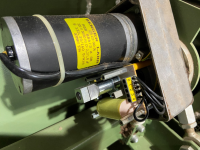Using 24Vdc power supplies with input ranges 380V..480V are very common. I wonder if anyone knows if there is anything similar to convert 380Vac..480Vac to single phase 220Vac/230Vac.
There are lots of VFDs that go the other way round and convert single phase to three phases and I know that there are lots of transformers that allow different configurations. My question is if anyone knows a power electronic device that controls the output so that I get 220V no matter what the input is. (as long as it's between 380V and 480V) I've spent quite some time searching the internet but couldn't find anything.
There are lots of VFDs that go the other way round and convert single phase to three phases and I know that there are lots of transformers that allow different configurations. My question is if anyone knows a power electronic device that controls the output so that I get 220V no matter what the input is. (as long as it's between 380V and 480V) I've spent quite some time searching the internet but couldn't find anything.


